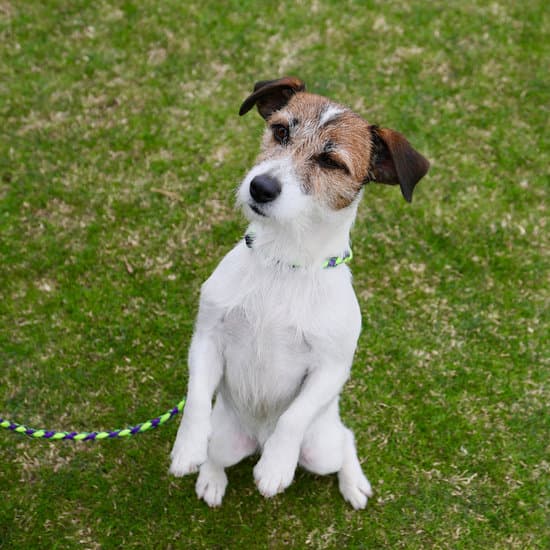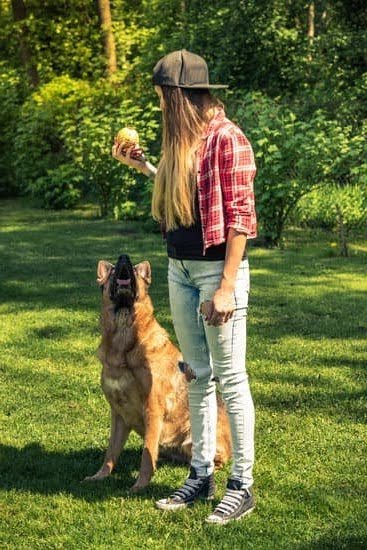Training your dog to toilet outside is an essential part of responsible pet ownership. Not only does it prevent accidents inside your home, but it also strengthens the bond between you and your furry friend. In this article, we will explore the importance of training your dog to toilet outside and provide you with a step-by-step guide on how to achieve success.
One of the primary benefits of having a dog that toilets outside is the cleanliness it brings to your home. No more worrying about stepping on a surprise mess or constantly cleaning up after accidents. By teaching your dog where and when to go, you can enjoy a hygienic living space that remains free from unpleasant odors and stains.
Additionally, training your dog to toilet outside helps establish clear boundaries and expectations. It shows them that certain areas are appropriate for toileting and others are not. This understanding strengthens their overall obedience and improves their behavior both indoors and outdoors.
The process of training also creates opportunities for positive reinforcement, deepening the bond between you and your four-legged companion. So let’s get started on this rewarding journey, guiding you through every step of training your dog to toilet outside.
Understanding Your Dog’s Natural Instincts and Behavior
When it comes to training your dog to toilet outside, it is essential to understand their natural instincts and behavior. Dogs are naturally inclined to keep their living areas clean, which can work in your favor during the training process. By leveraging this instinct and establishing a consistent routine, you can help your dog develop good toileting habits.
Dogs’ natural tendency to keep their living areas clean
Dogs have an innate desire to keep the areas where they eat, sleep, and play clean. This is why most dogs naturally prefer not to eliminate inside their living spaces. Understanding this aspect of your dog’s behavior can be helpful in teaching them to toilet outside. By recognizing and utilizing their instinctual drive for cleanliness, you can guide them towards the desired behavior.
The importance of establishing a consistent routine
Consistency is key when it comes to training your dog in any aspect, including toileting outside. Dogs thrive on routines and predictability. Establishing a consistent toileting schedule will help your dog understand when and where they should eliminate. It also helps prevent confusion and accidents inside the house.
To establish a routine, start by taking your dog outside at regular intervals throughout the day – ideally immediately after waking up, after meals, after playtime, and before bedtime. Finding a pattern that works for both you and your furry friend will make the training process smoother.
Additionally, make sure to bring your dog to the same spot each time they need to go potty. This consistency helps reinforce the idea that this particular spot is where they should relieve themselves. Over time, as they become familiar with this routine and location, they will more readily associate going potty with being outside.
Understanding your dog’s natural instincts and behaviors provides valuable insight into how you can effectively train them to toilet outside. By recognizing their inclination towards cleanliness and establishing a consistent routine, you are setting the foundation for successful toilet training.
Choosing the Right Outdoor Spot for Toileting
When it comes to training your dog to toilet outside, choosing the right outdoor spot for toileting is crucial. This section will guide you through the considerations for selecting the ideal toileting area and ensuring accessibility and safety.
Considerations for Selecting the Ideal Toileting Area
When choosing the outdoor spot for your dog to toilet, there are a few key factors to keep in mind. Firstly, select an area that is easily accessible both for you and your dog. It should be a location that you can easily reach whenever your furry friend needs to go outside.
Additionally, consider the surface of the area. Dogs may have preferences when it comes to where they like to eliminate, such as grass or gravel. Observe your dog’s behavior and try different surfaces until you find one that they are comfortable with.
It’s also important to choose an area that has good drainage. Dogs generally prefer dry ground over wet or muddy areas, so selecting a spot that doesn’t hold excess water will make them more inclined to use it. Finally, think about whether or not there are distractions in the immediate vicinity, such as noisy neighbors or other animals. These distractions could potentially prevent your dog from focusing on their toileting task at hand.
Ensuring Accessibility and Safety
In addition to considering the physical aspects of the outdoor spot, it’s also crucial to ensure accessibility and safety for both you and your dog. Make sure that the chosen location is easily reachable from inside your home without any obstacles or difficult terrain.
To further promote safety, ensure that the area is enclosed and secure. This will prevent your dog from wandering off while they are doing their business. If necessary, install a secure fence or use a leash until they become fully trained.
Finally, consider whether or not there are any potential hazards present in the selected toileting area. Remove any toxic plants or substances that could harm your dog. It’s also a good idea to keep the area clean and free of debris to minimize the risk of any accidents or discomfort.
By taking into account these considerations for choosing the right outdoor spot for toileting, you will create an environment that is comfortable, accessible, and safe for your dog to do their business. This will not only facilitate their toilet training but also contribute to a more positive overall experience for both you and your furry friend.
Establishing a Toileting Schedule
One of the key aspects of successfully training your dog to toilet outside is establishing a consistent toileting schedule. Dogs thrive on routine, and having a set schedule will help them understand when and where they should eliminate. This section will discuss the importance of creating a consistent routine for your dog and the significance of timing and anticipation in toileting training.
Creating a consistent routine is essential because it helps your dog develop good habits and understand what is expected of them. By taking your dog out to toilet at the same times every day, they will learn to anticipate those particular moments for elimination. It’s recommended to take your dog out first thing in the morning, after meals, before bedtime, and any other time that you notice signs that they need to go.
Timing plays a crucial role in toileting training as well. When you recognize signs that indicate your dog needs to relieve themselves, such as sniffing around or circling a particular spot, it’s important to act promptly and take them outside without delay. Timing is also important when it comes to rewarding your dog for eliminating outdoors. Giving praise or treats immediately after an incident reinforces the idea that toileting outside is desirable behavior.
| Benefit | Explanation |
|---|---|
| Establish Good Habits | A regular toileting schedule helps dogs develop good habits by teaching them when and where they should eliminate. |
| Anticipate Elimination | A consistent routine allows dogs to anticipate when they will need to relieve themselves, making it easier for them to hold it until they are taken outside. |
| Prompt Timing | Acting promptly when your dog shows signs of needing to go and providing immediate rewards for outdoor elimination reinforces the desired behavior. |
Positive Reinforcement Techniques
One of the most effective methods for training your dog to toilet outside is through positive reinforcement techniques. By using rewards and praise, you can encourage and reinforce the desired behavior of toileting in the designated outdoor area.
One popular method of positive reinforcement is using treats. Whenever your dog successfully toilets outside, give them a treat immediately as a reward. Choose small, bite-sized treats that your dog loves and keep them handy during potty training sessions. Giving the treat right after your dog finishes toileting will help them associate the act with receiving a reward, making them more likely to repeat this behavior in the future.
In addition to treats, praise and play are also effective forms of positive reinforcement. As soon as your dog finishes toileting outside, shower them with enthusiastic praise and petting. Use a high-pitched, joyful tone in your voice to convey your happiness and satisfaction with their behavior.
Engage in a short play session with their favorite toy or engage in some fun activities together immediately after they finish toileting. This positive association will further motivate your dog to repeat this behavior.
Remember that consistent timing is crucial when using positive reinforcement techniques. Rewarding your dog immediately after they toilet outside helps them understand that it’s the act of going potty outdoors that earns them the reward, reinforcing their understanding and motivation to continue doing so. With patience and persistence, positive reinforcement techniques can effectively train your dog to toilet outside consistently.
Utilizing Crate Training for Successful Toilet Training
Crate training can be a valuable tool in the process of toilet training your dog. It provides a safe and secure space for your dog when you are unable to supervise them, and can help prevent accidents inside the house. When used effectively, crate training can assist in establishing good potty habits and accelerate the toilet training process.
To introduce your dog to the crate, it is important to make it a positive and comfortable space. Start by placing treats or their favorite toy inside the crate to encourage them to explore it on their own. Gradually increase their time spent in the crate, allowing them to acclimate at their own pace. It is important never to force your dog into the crate or use it as a form of punishment.
When using the crate for toilet training purposes, it is crucial to ensure that it is properly sized for your dog. The crate should be just large enough for them to stand up, turn around, and lie down comfortably. If the crate is too big, your dog may feel comfortable eliminating in one corner and sleeping in another.
Using the crate as part of a consistent routine can help reinforce good toileting habits. Dogs have a natural instinct not to soil their sleeping area, so confining them in a limited space encourages them to hold their bladder or bowels until they are taken outside. Remember to always take your dog outside immediately after releasing them from the crate for bathroom breaks.
Additionally, don’t rely on the crate as a long-term solution for toileting needs. It should be used as a temporary measure during toilet training and gradually phased out as your dog becomes more reliable with outdoor toileting.
With patience and consistency, utilizing crate training can greatly contribute to successful toilet training for your furry friend. By providing a safe space for your dog while reinforcing good habits, you will be well on your way towards having a dog that consistently toilets outside.
Patience and Persistence
Accidents are an inevitable part of the toilet training process for dogs. It is important to approach these incidents with patience and persistence in order to maintain a positive training experience. Understanding that accidents are a normal part of the learning process can help dog owners remain calm and focused on their ultimate goal of having a dog that toilets outside consistently.
When accidents occur, it is crucial not to punish or scold your dog. This can create fear or anxiety around toileting and hinder their progress. Instead, focus on redirecting your dog’s behavior and reinforcing positive habits. For example, if you catch your dog in the act of eliminating indoors, calmly interrupt them by clapping your hands or making a noise to startle them without frightening them. Then, immediately take them outside to their designated toileting area.
After an accident occurs, it is essential to thoroughly clean up the affected area using an enzymatic cleaner specifically designed for pet urine and odor removal. This helps eliminate any lingering scent that may attract your dog back to that spot for future accidents. It is also important to avoid using any cleaning products with ammonia, as this can actually enhance the smell of urine from your dog’s perspective.
In addition to diligent cleaning, it is essential to anticipate your dog’s needs by establishing a consistent toileting schedule. By monitoring when they eat, drink, play, or wake up from a nap, you can predict when they are likely to need to go outside. Bringing your dog out at these times increases the chances of successful outdoor elimination and reduces the likelihood of accidents inside the house.
Dealing with accidents in a patient and persistent manner will ultimately lead to success in toilet training your dog. Remember, each setback is an opportunity for learning and improvement. With time, consistency, and praise for good behavior, your furry friend will master the art of toileting outside and you’ll be able to celebrate their progress together.
Troubleshooting Common Challenges
During the process of training your dog to toilet outside, you may encounter some common challenges along the way. It’s important to remember that accidents are a normal part of the training process, and with patience and persistence, you can overcome these challenges.
One common challenge is resistance or fear towards toileting outside. Some dogs may be hesitant to go outside due to unfamiliar noises or sights, while others may have had negative experiences in the past that make them anxious about going outdoors. If your dog exhibits resistance or fear, it’s essential to address their concerns gradually and with positive reinforcement.
Start by introducing your dog to the outdoor environment slowly, allowing them to become familiarized with new stimuli at their own pace. Use treats, praise, and play as rewards for any progress they make. With time and consistent positive reinforcement, your dog will become more comfortable toileting outside.
Another challenge that dog owners may face is regression in toilet training progress. It’s not uncommon for dogs who were previously doing well with toilet training to have setbacks or accidents after a period of successful behavior. Regression can occur due to various reasons such as changes in routine, unfamiliar environments, or stressors in the dog’s life.
To address this challenge, it’s important to revisit the basics of training and reinforce consistent routines and positive reinforcement techniques. Provide gentle reminders for your dog and avoid punishing them for accidents during regression periods. Instead, focus on reinforcing good behavior when your dog successfully toilets outside.
Additional Tips and Tricks
When it comes to toilet training your dog to go outside, there are some additional tips and tricks that can help make the process smoother and more successful.
- Using scent markers: Dogs have a strong sense of smell, so using scent markers in your chosen toileting area can help encourage them to go in that spot. You can do this by using a small amount of urine or feces from your dog on a specific spot outside. This will help create an association between that scent and the act of toileting, making it more likely that they will choose that area in the future.
- Providing appropriate bathroom cues: It can be helpful to establish specific cues or commands that signal to your dog when it is time to go outside and toilet. For example, you could use the phrase “go potty” or “do your business” consistently when taking them out to their designated toileting spot. Over time, they will begin to associate these cues with the action of toileting.
It’s important to remember that every dog is different and what may work for one may not work for another. Be patient and adaptable in your approach, adjusting your training methods as needed based on your individual dog’s needs and progress.
In addition to these tips, there are a few common mistakes pet owners make when trying to train their dogs to toilet outside. One is punishing accidents that happen inside the house. Punishment can create fear and anxiety in dogs, which can make it harder for them to understand what you want them to do. Instead of punishment, focus on positive reinforcement by rewarding your dog when they do eliminate outside.
Another mistake is not being consistent with the training routine. Dogs thrive on consistency and establishing a regular schedule will help them quickly grasp where and when they should go to the bathroom. Stick to the same toileting spot and take your dog out at the same times every day, including after meals and naps, first thing in the morning, and before bedtime.
By following these additional tips and avoiding common mistakes, you can help ensure a successful toilet training experience for both you and your dog. Remember that patience and persistence are key, and with time and consistency, your furry friend will learn to toilet outside reliably.
Conclusion
In conclusion, successfully training your dog to toilet outside is a rewarding feat that brings numerous benefits. Not only does it prevent accidents inside the house and maintain cleanliness, but it also strengthens the bond between you and your furry friend.
By understanding your dog’s natural instincts and behavior, choosing the right outdoor spot for toileting, establishing a consistent routine, utilizing positive reinforcement techniques, and incorporating crate training, you can set your dog up for success in their toilet training journey.
Throughout this process, it is important to remember that accidents are bound to happen. Patience and persistence are key in dealing with these setbacks. Address any resistance or fear towards toileting outside with gentle encouragement and reassurance. If there is regression in toilet training progress, reassess your approach and adapt as needed.
As you celebrate the milestones achieved in training your dog to toilet outside, it is crucial to maintain good habits by consistently reinforcing the desired behavior. Reflect on the progress made thus far and continue to offer praise, treats, or playtime as positive reinforcement for their actions. Additionally, utilizing scent markers and providing appropriate bathroom cues can further encourage your dog to use their designated outdoor toileting area.
Remember that successful toilet training is a journey that requires time and effort from both you and your dog. With patience and dedication, you can develop a routine that works for both of you while continually strengthening your bond. By staying consistent in your efforts and maintaining good habits, you can ensure long-term success in having a well-trained dog that toilets outside.
Frequently Asked Questions
How do I get my dog to pee when I go outside?
Getting your dog to pee outside requires consistency, patience, and positive reinforcement. First, establish a routine by taking your dog out to the same spot in your backyard or on a walk at regular intervals. This will help them associate that area with peeing. Give them plenty of time to sniff around and find a suitable spot.
If they don’t pee immediately, wait a bit longer or take them out again after 10-15 minutes. When your dog does pee outside, reward them with praise, treats, or a favorite toy to reinforce the behavior. Avoid scolding or punishing accidents indoors as this can create anxiety around peeing.
How do you get my dog to poop when I take him outside?
Encouraging your dog to poop outside follows a similar approach as teaching them to pee outside. Again, establish a consistent routine for bathroom breaks and bring your dog to the same area each time you go outside. Take note of their normal bowel movement schedule and try to align it with these times if possible.
Make sure your dog feels comfortable and relaxed during these breaks by giving them enough time to sniff and explore their surroundings. If they don’t poop immediately, be patient and give them more opportunities throughout the day while keeping an eye out for signs like circling or squatting. Offer rewards and praise when they successfully poop outside.
Why can’t I train my dog to pee outside?
There could be several reasons why you’re having difficulty training your dog to pee outside. One common issue is inconsistency in the training process itself – dogs need clear and consistent expectations from their owners in order to learn new behaviors effectively.
Ensure that you take your dog out at regular intervals throughout the day and provide ample opportunities for them to relieve themselves outdoors.

Welcome to the blog! I am a professional dog trainer and have been working with dogs for many years. In this blog, I will be discussing various topics related to dog training, including tips, tricks, and advice. I hope you find this information helpful and informative. Thanks for reading!





